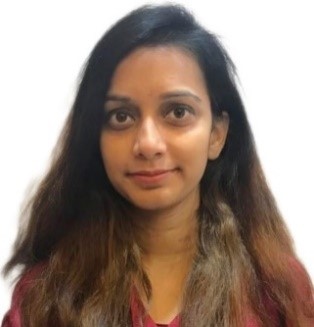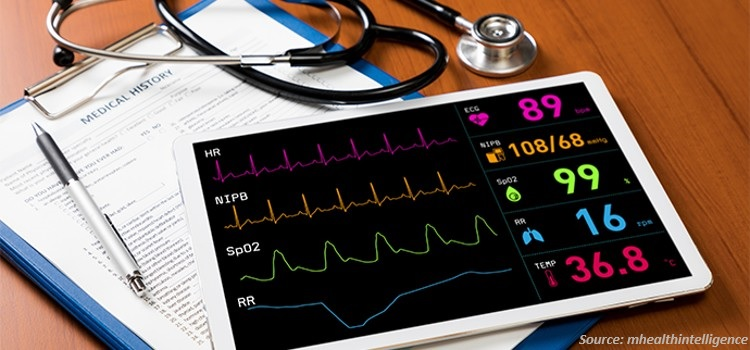Transforming Healthcare With Patient Monitoring Innovations
Introduction
Patient monitoring refers to the continuous or periodic observation and measurement of various physiological parameters and health indicators in individuals who require medical attention. These parameters may include vital signs, such as heart rate, blood pressure, respiratory rate, temperature, and oxygen saturation. Furthermore, they observe and measure other specific metrics related to a patient's condition, such as glucose levels, electrocardiogram (ECG) readings, or intracranial pressure.
The data collected through patient monitoring can be used to assess a patient's health, detect changes or abnormalities, and provide timely interventions or adjustments in medical treatment as necessary. Monitoring can be conducted in various healthcare settings, including hospitals, clinics, and even remotely in the patient's home using specialized devices and technologies.
The world of healthcare is undergoing a profound transformation, and at the heart of this change lies the patient monitoring market. With technological advancements, shifting demographics, and the evolving global healthcare landscape, patient monitoring has taken the center stage in improving healthcare outcomes. In this article, we will delve into several pivotal trends and advancements that are reshaping the patient monitoring sector, underscoring its increasing importance within the current healthcare landscape.
1. Remote Patient Monitoring (RPM): One of the standout trends in patient monitoring is the increasing adoption of remote patient monitoring (RPM) solutions. The COVID-19 pandemic accelerated this trend, emphasizing the importance of remote healthcare services. RPM allows patients to be monitored from the comfort of their homes, reducing the need for frequent hospital visits. It benefits patients with chronic conditions, such as diabetes or hypertension, and provides timely intervention when needed.
For example, in August 2023, Iron Bow Healthcare Solutions, a prominent provider of technology solutions serving government, commercial, and healthcare sectors, introduced Remote Patient Monitoring (RPM) powered by Carium. This solution offers complete digital healthcare services, including support, device management, clinical integration, and connection to other healthcare services. Carium, the central platform, links healthcare teams with patients for virtual care.
2. Wearable Technology: Wearable patient monitoring devices, such as smartwatches and fitness trackers, were rapidly advancing in sophistication, allowing individuals to monitor their health metrics continuously with greater precision and convenience. This trend was poised to continue its upward trajectory, driven by technological innovations. These devices empowered users to keep a close eye on their fitness goals and daily activities and held great potential in the healthcare sector.
They became widely incorporated into healthcare procedures, facilitating remote patient monitoring and the prompt identification of health concerns. With evolving sensors and features, wearables were becoming more than lifestyle accessories. They were growing into indispensable tools for health-conscious individuals and healthcare professionals, promising a future where proactive health monitoring would be seamlessly integrated into daily life.
For instance, in December 2022, Mindray, a renowned global leader in the field of advanced medical device solutions, unveiled the mWearTM system, a groundbreaking wearable patient monitoring solution. This innovative system facilitates a streamlined workflow for continuous patient condition monitoring and the delivery of cutting-edge & patient-focused care.
3. Artificial Intelligence (AI) and Machine Learning (ML): AI and ML are playing a pivotal role in patient monitoring by revolutionizing the analysis of vast amounts of patient data collected from monitoring devices. These technologies enable early disease detection by identifying subtle changes in vital signs or health metrics that could indicate the onset of a health issue, allowing for timely intervention.
Additionally, AI and ML facilitate personalized treatment plans by tailoring healthcare interventions to individual patient data, ensuring more effective and efficient care than before. Predictive analytics powered by AI can forecast patient health trends, enabling healthcare providers to address potential issues before they escalate proactively. Overall, AI and ML enhance the precision, efficiency, and effectiveness of patient monitoring, significantly improving healthcare outcomes.
For example, in March 2023, Zephyr AI, Inc. and KangarooHealth, Inc. embarked on a multi-year strategic collaboration to deliver valuable insights to clinicians for making informed treatment choices for patients with chronic conditions. This partnership will synergize Zephyr AI's cutting-edge machine learning technology with KangarooHealth's exclusive remote monitoring platform to develop an outstanding predictive solution that sets the industry standard for healthcare professionals.
4. Telehealth and Telemedicine: The integration of patient monitoring with telehealth and telemedicine has revolutionized the healthcare landscape. Patients can now use wearable devices or at-home monitoring equipment to track their vital signs and health metrics, while healthcare providers can remotely access this data in real time. This trend has gained significant prominence during the COVID-19 pandemic, as it mitigates the risk of exposure while ensuring that patients receive the essential care they require.
It is a transformative shift towards more accessible, convenient, and patient-centric healthcare delivery. For instance, in August 2022, Teladoc Health, a multinational telemedicine and virtual healthcare company, collaborated with a prominent remote patient monitoring platform Cloud DX, to enhance remote monitoring services for patients throughout Canada. Within this partnership, Cloud DX's existing remote patient monitoring services in Canada will receive improvements by incorporating Teladoc Health's virtual healthcare expertise.
5. Innovations in Sensors and Connectivity: Advancements in sensor technology and connectivity options, such as the widespread adoption of 5G networks, are driving the development of accurate and reliable patient monitoring devices. These innovations ensure that healthcare professionals receive real-time and precise data, enabling them to make informed decisions promptly.
Sensors embedded in monitoring devices have become more sensitive and capable of accurately capturing a broader range of health metrics. Additionally, the robust connectivity provided by 5G networks enables seamless data transmission, reducing latency and ensuring that healthcare data reaches its destination swiftly. These technological advances are critical in ensuring the effectiveness of patient monitoring, enabling healthcare providers to deliver timely interventions, and improving overall patient outcomes.
The patient monitoring market is at the forefront of healthcare innovation, with many transformative trends and technologies. RPM, wearable tech, AI-driven analytics, and seamless data integration reshape the patient monitoring landscape. These advancements are set to enhance patient results, lower healthcare expenditures, and elevate the overall standard of care.
For instance, in September 2023, Boston Children's Hospital unveiled a cutting-edge 5G network, marking a significant step toward the integration of patient monitoring technology. This innovative network is set to serve as the foundation for upcoming healthcare advancements. It boasts a scalable infrastructure capable of facilitating remote patient monitoring within the comfort of patients' homes, complemented by AI-driven specialist prioritization. Simultaneously, Boston Children's Hospital is embarking on a major technology project. T-Mobile recently announced their collaborative effort to introduce the healthcare industry's inaugural hybrid 5G network, aiming to revolutionize health system connectivity.
Conclusion
In a world where healthcare is undergoing profound changes, patient monitoring has become essential to the healthcare ecosystem. It empowers patients, supports healthcare providers, and promises a future in which healthcare is more accessible, convenient, and patient-centric than before. Staying informed about these developments is crucial for healthcare professionals, industry stakeholders, and patients alike as the patient monitoring market continues to evolve and shape the future of healthcare.
About the Author
 Sikha Haritwal is a researcher with more than 3 years of experience. She has been keeping a close eye on several industry verticals, including healthcare, personal care products, and consumer electronics. She has avid interest in writing news articles and hopes to use blog as a platform to share her knowledge with others. When she is not following industry updates and trends, she spends her time reading, writing poetry, cooking, and photography. The author can be reached at sikha.haritwal@nextmsc.com
Sikha Haritwal is a researcher with more than 3 years of experience. She has been keeping a close eye on several industry verticals, including healthcare, personal care products, and consumer electronics. She has avid interest in writing news articles and hopes to use blog as a platform to share her knowledge with others. When she is not following industry updates and trends, she spends her time reading, writing poetry, cooking, and photography. The author can be reached at sikha.haritwal@nextmsc.com


Leave a Reply